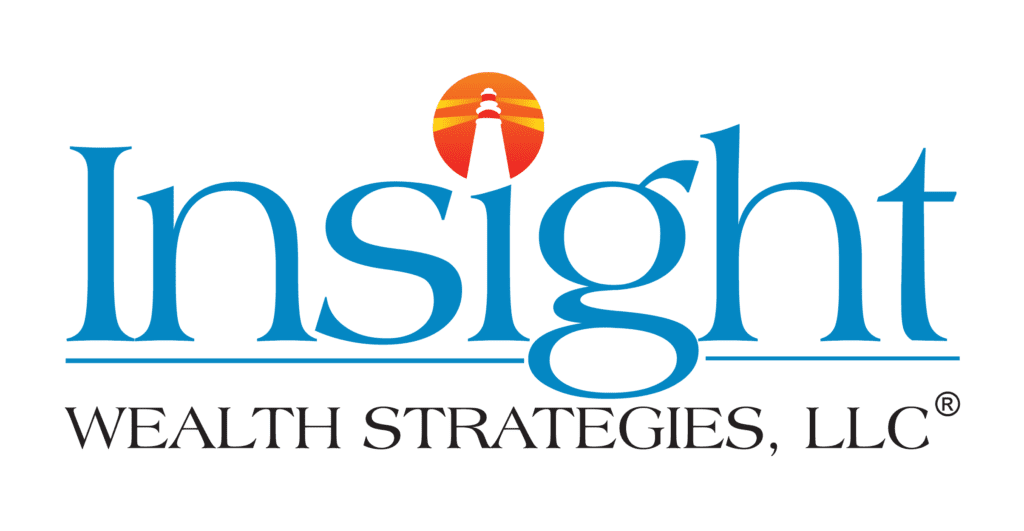What is a Donor-Advised Fund and How Does It Work?
As charitable giving continues to evolve, donor-advised funds (DAFs) have emerged as a popular choice for individuals and families aiming to make a lasting impact. A DAF offers a flexible and strategic approach to philanthropy, allowing donors to contribute funds, receive immediate philanthropy tax benefits, and then invest those funds for potential growth before distributing them to their chosen charities. This structure aligns giving with broader financial and legacy goals, enabling donors to maximize the value of their contributions over time. With ease of setup and a streamlined process, DAFs are an ideal solution for those looking to amplify their charitable impact while maintaining control over how and when their donations are distributed.
Understanding Donor-Advised Funds (DAFs)
Donor-advised funds have become a favored philanthropic, charitable giving vehicle for high-net-worth individuals (HNWIs) due to their combination of flexibility, tax efficiency, and control. By establishing a DAF, donors can make a single, substantial charitable contribution to a giving account—often in the form of cash, stocks, or other appreciated assets—while benefiting from an immediate tax deduction1. Unlike direct donations, DAFs allow contributions to grow tax-free through investments, providing an opportunity to amplify charitable impact over time. This approach aligns seamlessly with high net worth financial planning strategies, enabling HNWIs to integrate their charitable giving into broader financial and legacy planning. It allows donors to strategically plan their giving, aligning donations with personal values and financial goals while retaining the ability to adjust charitable distributions as circumstances or priorities change.
How Does a Donor-Advised Fund Work?
Setting up a donor-advised fund begins with selecting a sponsoring organization, typically a public charity or financial institution that administers and manages DAFs on behalf of donors. The donor establishes their fund within this organization and contributes assets which are then placed in the DAF. Once the contribution is made, the assets are legally owned by the sponsoring organization, which oversees the fund, while the donor maintains advisory privileges.
After funding, the donor collaborates with the sponsoring organization to choose investment options that align with their goals, allowing the assets to potentially grow tax-free within the fund. At any time, the donor can recommend grants to eligible charities, with the sponsoring organization handling the grant distribution and ensuring the funds go to qualified recipients. This structure offers donors considerable flexibility, enabling them to make grants on their own timeline and adjust investment choices within the fund to maximize impact over time.
Key Benefits of Donor-Advised Funds
Immediate Tax Deduction and Flexibility in Donation Timing
One key advantage of DAFs is the immediate tax deduction donors receive upon making a contribution to the fund, regardless of when they actually grant funds to charities1. This upfront tax benefit can be particularly advantageous in high-income years, allowing donors to maximize deductions when they’re most beneficial. At the same time, donors have the flexibility to take their time deciding on specific charities or causes they wish to support, giving them the freedom to thoughtfully plan their philanthropic impact over months or even years.
Potential for Growth Through Investment
A unique advantage of DAFs is the opportunity for donated assets to grow tax-free through investment before being distributed to charities. Once a contribution is made, donors can select from various investment options provided by the sponsoring organization, often tailored to different risk tolerances and financial goals. As these assets grow within the DAF, the overall charitable pool increases, allowing donors to amplify their impact over time. This growth potential not only helps donors make a more significant contribution to their chosen causes but also allows for more strategic, long-term planning, as they can distribute an enhanced amount to charities at their discretion.
Anonymity and Privacy in Charitable Giving
DAFs offer donors the option to give anonymously, providing a layer of privacy that is not always possible with direct donations. This anonymity can be beneficial for those who prefer to keep their philanthropic activities private or avoid public recognition. Additionally, by donating through a DAF, donors can shield their personal information from recipient organizations, reducing or eliminating solicitations from charities seeking further contributions.
Simplified Charitable Planning
DAFs simplify the process of managing multiple charitable contributions, making them ideal for donors with busy schedules or complex philanthropic goals. By centralizing donations into a single fund, DAFs eliminate the need to track numerous separate donations and tax receipts, as the sponsoring organization handles the administrative aspects. Donors can contribute to their DAF once, receive a single tax receipt, and then recommend grants to multiple charities over time, all from one streamlined account. This structure allows for more efficient and organized charitable planning, giving donors the flexibility to support various causes without the logistical complexities typically associated with multi-charity donations.
What is the Difference Between a Donor-Advised Fund and a Charitable Trust?
Overview of Charitable Trusts
A charitable trust is a legal entity established to manage assets for philanthropic purposes, providing a structured approach to charitable giving. There are several types of charitable trusts, but two common forms are the charitable remainder trust (CRT) and the charitable lead trust (CLT). In a charitable remainder trust, assets are placed into the trust, which pays a specified income to beneficiaries (often the donor or their heirs) for a set period. Afterward, the remaining assets go to the designated charities. Conversely, a charitable lead trust distributes income to charities for a defined term, after which the remaining assets return to the donor’s beneficiaries. Charitable trusts allow for long-term planning with both income and charitable benefits, but they require more legal setup and ongoing administration compared to donor-advised funds.
Key Differences in Flexibility, Control, and Tax Benefits
DAFs and charitable trusts offer distinct advantages depending on a donor’s financial and philanthropic goals. DAFs provide high flexibility with minimal setup, allowing donors to contribute assets, take an immediate tax deduction, and maintain advisory privileges over investment and distribution decisions—all with relatively low administrative effort. In contrast, charitable trusts, while offering tax benefits and strategic estate planning options, require a more involved setup and ongoing management due to legal requirements. Charitable remainder trusts, for example, can generate income for the donor or their beneficiaries, with the remainder ultimately benefiting a charity, offering tax advantages over time.
For donors primarily focused on streamlined giving with flexible grant-making options, a DAF is often the ideal choice. In cases where income generation or estate planning is a primary concern, a charitable trust may be more appropriate. Charitable trusts also suit donors seeking a structured, long-term giving vehicle that integrates both family income and charitable goals, making them a beneficial option in certain wealth management and estate planning scenarios.
How to Set Up a Donor-Advised Fund
Choosing the Right Sponsoring Organization
Selecting the right sponsoring organization is an important first step in setting up a DAF, as it directly affects the fund’s costs, investment choices, and flexibility. Sponsoring organizations typically fall into three main categories: financial firms, national DAF programs, and community foundations. Financial firms, like Fidelity or Vanguard, offer DAF programs with diverse investment options and straightforward online management, often appealing to individuals looking for a broad range of portfolio choices. National DAF programs, run by large charitable organizations, provide robust donor support and efficient processes. Community foundations, on the other hand, are well-suited for those who want to support local causes, as they often focus on regional philanthropic efforts and can offer more tailored advice for community-focused donors.
When choosing among these options, donors should consider factors like minimum contribution requirements, which can vary significantly between sponsoring organizations. Additionally, fees—often including administrative and investment fees—can impact the fund’s growth over time, so comparing costs is essential. Investment options also vary widely, from basic portfolios to more customized choices that align with a donor’s risk tolerance and growth objectives. By carefully evaluating these aspects, donors can select a sponsoring organization that aligns with their financial goals and charitable vision, setting the foundation for successful, strategic giving.
Funding Your Donor-Advised Fund
DAFs offer flexibility in funding options, allowing donors to contribute a range of assets, including cash, stocks, mutual funds, and other securities. Cash contributions are straightforward and offer immediate tax deductions up to 60% of adjusted gross income (AGI) for the donor2. However, one of the most tax-efficient ways to fund a DAF is through appreciated assets, such as stocks or real estate. When donors contribute appreciated assets held for more than one year, they can avoid capital gains tax on the asset’s appreciation, while also receiving a charitable deduction for the full market value of the asset at the time of the donation3. This dual benefit maximizes the donor’s tax efficiency, allowing more funds to go toward charitable purposes rather than tax obligations.
Managing and Growing Your DAF Assets
Once a DAF is funded, the assets within the fund can be invested in various portfolios, allowing them to grow tax-free until distributed to charities. Sponsoring organizations typically offer a range of investment options, from conservative, low-risk portfolios to more growth-oriented ones, often including options that focus on social or environmental impact investing. This allows donors to select investment strategies that align with their risk tolerance, time horizon, and personal values. For those aiming to support long-term charitable goals, choosing a growth-focused investment strategy can increase the overall pool of funds available for future grants, potentially amplifying the impact of their contributions.
Is a Donor-Advised Fund Right for You?
Factors to Consider Before Setting Up a DAF
Before establishing a DAF, it’s important to consider several factors to determine if it aligns with both your charitable intentions and broader financial goals. First, think about your giving timeline—DAFs are well-suited for donors looking to take an upfront tax deduction while spreading out donations to charities over several years. Additionally, evaluate your financial resources and whether you have appreciated assets, like stocks or real estate, that could be donated to maximize tax benefits. Also, consider the level of involvement you want; while DAFs offer flexibility, they may not provide the same level of control as other giving vehicles, like private foundations. Finally, think about your administrative preferences and capacity for managing a fund, as DAFs offer simplified administration through the sponsoring organization. Taking these factors into account can help you determine if a DAF supports your philanthropic goals and fits into your overall financial plan.
Consulting a Financial Advisor
When considering a DAF, consulting a financial advisor can be invaluable in ensuring that your charitable giving aligns with your broader wealth management and legacy goals. A financial advisor can help evaluate your current assets, tax situation, and long-term financial plan to determine if a DAF complements your objectives. They can also provide guidance on which assets to contribute and how to structure your DAF investments to maximize impact while maintaining tax efficiency. For personalized support, Insight offers financial planning services in Houston and San Ramon, helping clients integrate charitable giving into a comprehensive financial strategy. Engaging an advisor ensures your DAF works effectively within your financial plan, optimizing your ability to make a lasting impact.
Integrating Donor-Advised Funds into Your Wealth Management Strategy
DAFs can play a powerful role within a broader wealth management strategy, offering a flexible way to achieve philanthropic goals alongside financial planning objectives. DAFs allow high-net-worth individuals to support charitable causes while maximizing tax benefits, freeing up resources that can be allocated to other areas of their financial plan. For example, by combining a DAF with retirement or estate planning, donors can structure giving that benefits charities while reducing taxable income or transferring wealth efficiently. Additionally, integrating a DAF with investment strategies can enable tax-efficient growth, maximizing the charitable impact over time. At Insight, we provide tailored support for wealth management in Houston and San Ramon, helping clients strategically incorporate DAFs and other charitable tools to meet their long-term financial and philanthropic goals.
Start Your Charitable Giving Journey with Insight Wealth Strategies
Starting your charitable giving journey with Insight Wealth Strategies helps ensure that your philanthropic vision is seamlessly integrated into a comprehensive wealth management plan. Our team is dedicated to helping you align your giving strategies with your broader financial objectives, offering guidance on DAFs and other charitable vehicles. With tailored financial planning solutions designed around your unique goals, we help you make a lasting impact while optimizing your financial health. Whether you’re new to charitable giving or looking to refine your approach, Insight Wealth Strategies is here to support you every step of the way. Reach out to learn how we can create a customized plan that empowers your charitable legacy and financial future.
Reviewed by,

Brian Stormont, CFP®
Brian Stormont is a comprehensive, fee-only financial advisor with Insight Wealth Strategies who began his career in the financial industry in 2000. His expertise encompasses retirement planning, investment planning, estate planning, and high-level strategies to help business owners and individuals minimize their income taxes.
Sources:
- https://www.fidelitycharitable.org/guidance/philanthropy/what-is-a-donor-advised-fund
- https://www.nptrust.org/what-is-a-donor-advised-fund/daf-tax-consideration
- https://www.schwab.com/learn/story/charitable-donations-basics-giving
Insight Wealth Strategies, LLC is a Registered Investment Adviser. Advisory services are only offered to clients or prospective clients where Insight Wealth Strategies, LLC and its representatives are properly licensed or exempt from licensure. Past performance is no guarantee of future returns. Investing involves risk and possible loss of principal capital. No advice may be rendered by Insight Wealth Strategies, LLC unless a client service agreement is in place.
Insight Wealth Strategies, LLC (IWS) and its affiliates do not provide tax, legal or accounting advice. This material has been prepared for informational purposes only, and is not intended to provide, and should not be relied on for, tax, legal or accounting advice. You should consult your own tax, legal and accounting advisors before engaging in any transaction.
Certified Financial Planner Board of Standards Inc. owns the certification marks CFP®, CERTIFIED FINANCIAL PLANNER™, in the U.S., which it awards to individuals who successfully complete CFP Board’s initial and ongoing certification requirements.

